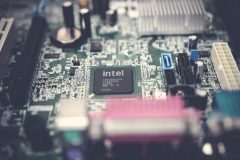Apple is yet to introduce touchscreen displays into its PCs and seem to be undeterred that other manufacturers have been making touchscreen laptops for years. Although if Apple integrates its iOS apps to its Mac lineup its stance that touch panels are for phone and tablets alone might change.
But prior to the time Apple decides to have a change of heart, you can hack touch screen functionality onto a MacBook. The Project Sistine method saves you $98 you’d spend on getting a third party gadget like the $99 AirBar. You could add a touch functionality to a MacBook with just about $1 worth of hardware with the Project Sistine method.
The technology used to achieve the touch screen is based on a simple physical principle — By mounting a mirror over a laptop’s webcam, you view it from a sharp angle and then you’re able to see objects close to the screen, along with their reflections.
When you put your finger close to the screen, both your finger and its reflection can be seen. When your finger touches the screen, it is registered as a click. The software utilised is classical computer vision algorithms and a tool called ShinyTouch which uses a 2D camera to capture 3D touch input. The software sends touch events to the computer’s operating system as if it were a mouse.
 The project was developed by Anish Athalye, Kevin Kwok, Guillermo Webster, and Logan Engstrom. It was organised in 16 hours and utilise hardware parts that you could find in drug stores that cost $1. The parts include; A small mirror, a rigid paper plate, a door hinge and hot glue. The paper plate and door hinge create a frame where you can place the laptop on while the mirror is held in place by the hot glue. This causes the camera to look down revealing objects close to the screen, along with their reflections.
The project was developed by Anish Athalye, Kevin Kwok, Guillermo Webster, and Logan Engstrom. It was organised in 16 hours and utilise hardware parts that you could find in drug stores that cost $1. The parts include; A small mirror, a rigid paper plate, a door hinge and hot glue. The paper plate and door hinge create a frame where you can place the laptop on while the mirror is held in place by the hot glue. This causes the camera to look down revealing objects close to the screen, along with their reflections.






















